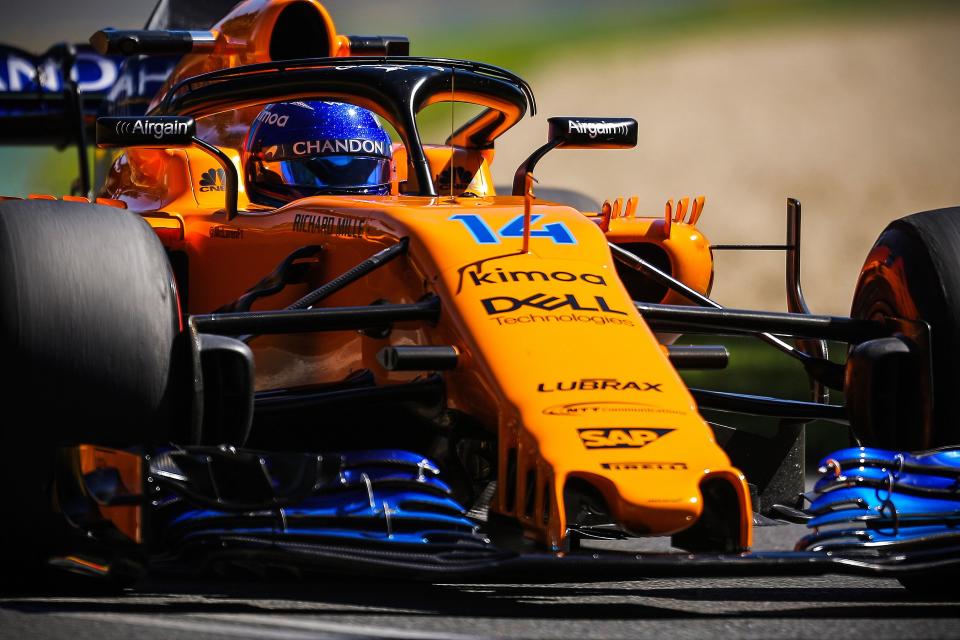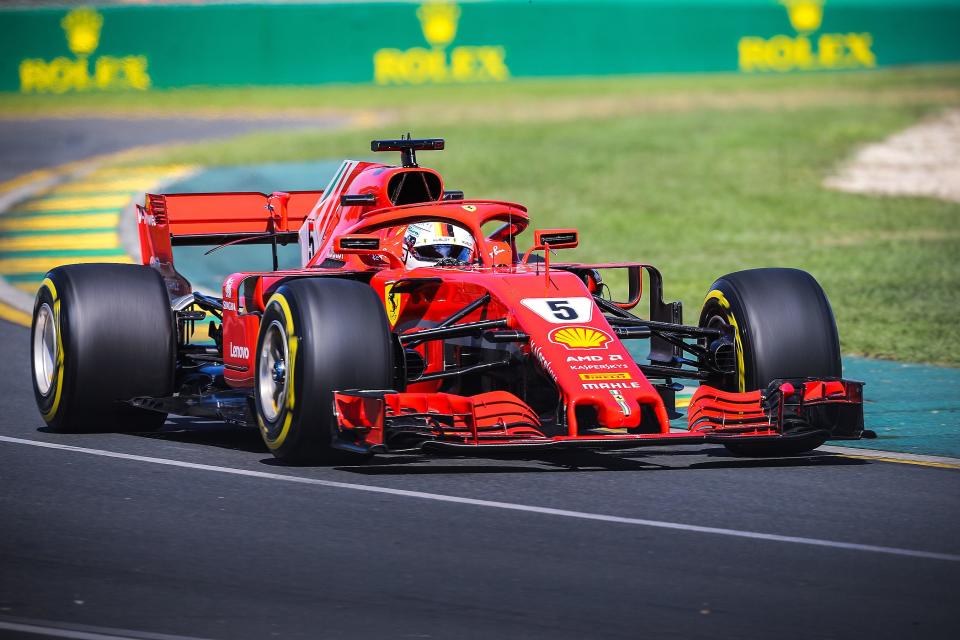Australian Grand Prix: F1 returns and it's faster than ever. Literally

Glory be, F1 is back this weekend, rescuing petrolheads from Sunday afternoon trips to the garden centre and giving fans the usual mix of new – and old – things to argue about.
There’s plenty that’s changed since last season and, if truth be told, plenty more that hasn’t.
One thing that hasn’t is the fabulous location of the opening race, in Albert Park, just a free tram ride away from Melbourne city centre. What’s in store, then, F1 fans?
F1’s need for speed… sated

This year’s cars are fast, brutally fast. The engines may be turned down a bit (because each driver is supposed to make just three engines last the season…) but we’re going to see the all-time lap-record broken this weekend.
Last year’s fastest race lap was from Kimi Raikkonen (1:26.538) but that wasn’t enough to top Michael Schumacher’s effort from way back in 2004, when he lapped in 1:24.125, on his way to winning in Australia and, as it happened, 12 of the first 13 races of the season.
And you were complaining that F1 is too predictable now?
Lewis Hamilton already looks to have that lap record within his grasp and we may see a fastest lap down in the 1:23s – certainly in qualifying.
READ MORE: F1 season preview by Kenny Campbell
READ MORE: Ricciardo calls on Red Bull to deliver statement of intent
READ MORE: Pre-season report – Williams
This needs some context. Many F1 regulations make the cars slower – some by design, some as a consequence.
For example, when he set the lap record, Schumacher was propelled by a 3litre, V10 engine (that had been strengthened because new regulations in 2004 meant each driver had only one engine to last a weekend… yes, just the one) while the current F1 power units are meagre 1.6litre V6 offerings, designed to last seven races each.
But, of course, modern powerplants are more efficient, more reliable and more powerful than Schumi’s 3litre beast (his pumped out between 900 and 950hp, Merc are rumoured to be getting 1,000hp from their 2018 lump).
What this all boils down to is that the drivers are being properly tested when they are pumping in fastest laps this year – high speeds, violent braking, huge g-forces (between 5.5 and 6g in some corners).
F1 is a sport where gaps are measured in thousandths of a second per lap, but this year’s fastest lap could be 2.5 or even 3seconds faster than last year, which is quite astonishing.
Of course, faster racing doesn’t necessarily mean better racing, but you’re not going to argue with it, are you?
What else is making the cars fast?

This year’s tyres are a factor – Pirelli has revamped its range of F1 tyres, and there are now seven dry-weather options, plus a couple of wets as well.
Don’t expect to see the new, pink-walled hypersoft tyres much outside qualifying, as they’re likely to be similar to driving on freshly-chewed gum (in a good way, of course). Likewise, the new, orange-walled superhard rubber (you can shudder at that label, I certainly do) is intended to be Pirelli’s ‘insurance policy’ because the rest of the range is so soft.
Even Pirelli don’t expect to fully understand how the new tyres perform until mid-season, but we already know there’s a big performance difference between the different grades.
For example, softs are around 0.8seconds a lap quicker than mediums, hypersofts are about the same amount quicker than ultrasofts. The total gap between mediums and hypersofts is around 2.5seconds, so there’s plenty for the race strategists to play with.
READ MORE: Pre-season report – Renault
READ MORE: Pre-Season Report – Red Bull
READ MORE: Pre-Season Report – Force India
There is, of course, clever new aero kit on all the cars this year and some of it is already proving controversial.
Renault has attracted attention by angling its exhaust gasses up (at the maximum permitted 5 degrees, since you asked) to create a super-efficient ‘blown’ rear wing – something that the rules have been changed to, shall we say, discourage. They’ve also mapped their engines to keep the gas flow more consistent, even when the drivers are off-throttle.
The downside of this aerodynamic trickery is that the wing gets cooked by 400C fumes, straight from the bowels of the engine. And so Renault have fitted heat shielding to the wing underside.
If you want to see more clever aero work, look at Force India’s rather pretty but complicated front wing. Better still, have a gander at Red Bull’s bargeboards, astonishingly complex bits of engineering from the planet-sized brain of design guru Adrian Newey.
Oh, and Ferrari have got hollow wing mirrors, that divert air down into the radiators. So that’s what F1 mirrors are for.
And who’s going to be fastest?

Oh, do come on. Mercedes have looked unstoppable, they have a qualification setting that’s so good it’s been christened the ‘party mode’ by Lewis Hamilton, and, apart from being tough on their tyres, they don’t look to have any worries.
Hamilton’s been putting in laps that are half a second quicker than his team-mate Valtteri Bottas who, in turn, has been quicker than anyone else in early practice.
There’s just one small thing to remember. Last year, Hamilton stuck his Merc comfortably on pole but, in the race, he was beaten fair and square by Vettel.
The Ferrari was better, far better, on ultrasoft tyres and Mercedes had no answer – well, apart from team principal Toto Wolff famously banging his fist on the desk in frustration.
So, watch those Mercedes tyre choices.
Also watch the weather for qualifying. It looks like Melbourne’s infamous weather could throw some Saturday rain into the equation, bringing Red Bull into play.
Red Bull have, by all accounts, a cracking chassis but their Renault engine is estimated to be 40hp down on Mercedes – a bit of rain could neutralise that difference.
That’s not to say Ferrari won’t repeat last year’s Melbourne success – the engine’s good, the prep’s been good, Sebastian Vettel is in a good state of mind and, lest we forget, it’s been several thousand years since Ferrari last had an F1 champion. They’re famished.
Enough already with Zimmer-vision

I didn’t want to mention it but it’s impossible to ignore the much-derided halo.
Whether or not you think it’s an abomination of a thing, or a necessary evil in the name of safety (and in the name of F1 not getting sued because of head injuries), one thing is for certain: it is wrecking much of the onboard footage we’ve grown to love over the years.
There was disbelief from fans when onboard footage from Alonso’s handsome McLaren showed… well, not so much. Hamilton’s wasn’t much better and, in some onboard shots, the halo was like some huge Zimmer frame, travelling at 200mph and blocking the view of everything behind it.
Damn you, Zimmer-vision. F1 owners Liberty, who are doing all they can to bring new audiences to the sport, will be more than a little concerned that these audiences are being denied some of the best views of F1, because the halo is right in the way.
I imagine a solution will be found soon enough – otherwise, we’re quickly going to tire of tossing random curses at the screen every time a crucial bit of in-car action is hidden by the halo.
On the topic of the halo, on the start-finish straight at Albert Park, you’ll notice some extra start lights – they’re ‘repeater’ lights, they sit at the side of the track a bit lower than the main start lights, and they’re there because drivers are struggling to see past the halo to the lights gantry.
That’s right, the new safety device hinders drivers seeing the start lights; and it’s worse for the bloke on pole.
It’s causing enough concern for the authorities to have permitted some practice starts on the grid, just so drivers can get used to the new challenges of seeing when the lights change.
Ah well, it wouldn’t be F1 if there wasn’t controversy.
Now, don’t forget to set your alarm for Sunday morning – the race starts at 6:10am BST.
Yes, the clocks do go forward this weekend, so you may as well pull an all-nighter. It’s a small price to pay to avoid missing F1’s return.

 Yahoo Sport
Yahoo Sport 






































